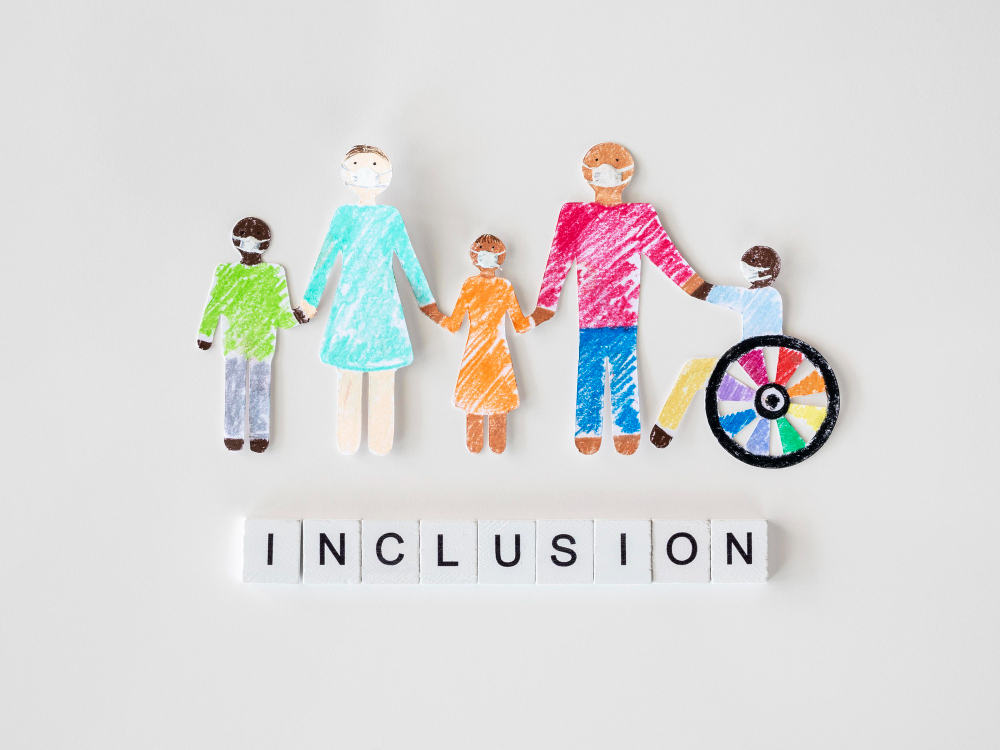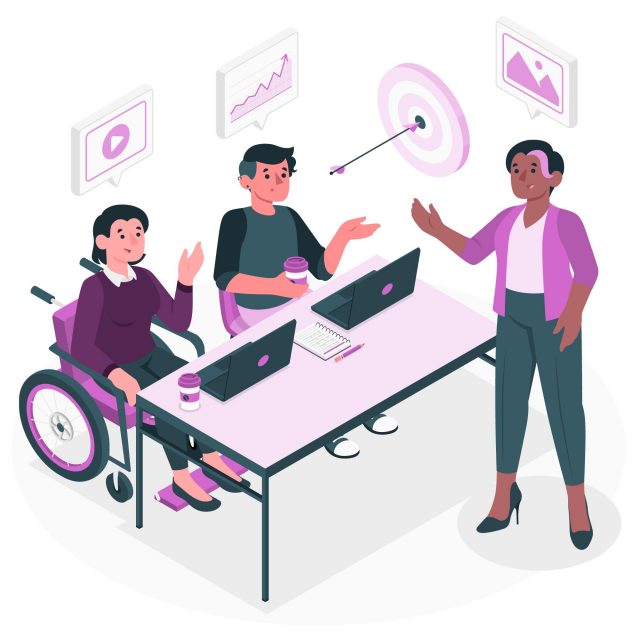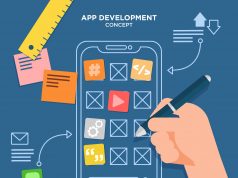In a world where technology plays an ever-increasing role in our daily lives, creating digital experiences that are accessible to everyone has become not only a best practice but also a legal requirement in the United States. The USA, known for its cultural diversity, places significant importance on ensuring that digital products and services are designed with inclusivity in mind. This blog explores the significance of inclusive design in the USA and how it is transforming the way digital products and services are developed.
Understanding Inclusive Design
Inclusive design, within the context of UI/UX design, represents a fundamental shift in the approach to creating digital interfaces. It emphasizes the importance of considering the diverse needs and abilities of all users, including those with disabilities. At its core, inclusive design recognizes that diversity is the norm, not the exception, and it seeks to create digital experiences that accommodate this diversity.
Inclusive design centers on the user and is gaining recognition among designers worldwide, including in the USA. It prioritizes designing for everyone, irrespective of physical or cognitive limitations. It involves factors like accessibility, usability, and user experience. By emphasizing inclusivity, UI/UX designers aim to remove barriers, making digital products universally functional and user-friendly, regardless of users’ abilities or backgrounds. This approach also aligns with legal requirements such as the Americans with Disabilities Act (ADA) and fosters a more inclusive digital society.
Web Content Accessibility Guidelines (WCAG)
To achieve ADA compliance and embrace inclusive design, many organizations in the USA turn to the Web Content Accessibility Guidelines (WCAG). These guidelines, developed by the World Wide Web Consortium (W3C), provide a comprehensive framework for making web content more accessible to people with disabilities. WCAG covers a wide range of aspects, from providing text alternatives for non-text content to ensuring keyboard navigation and beyond. Complying with WCAG guidelines is a crucial step for businesses aiming to create inclusive digital experiences.
The Benefits of Inclusive Design
Inclusive design, often referred to as universal design or accessibility design, is an approach that aims to create products and environments that are usable and accessible to the widest possible range of people, regardless of their abilities or disabilities. In the United States, the adoption of inclusive design principles has gained significant traction due to both legal requirements and a growing awareness of the benefits it brings. Here, we delve into the myriad advantages of embracing inclusive design.
Accessibility for All:
The primary and most profound benefit of inclusive design is accessibility. It ensures that products and services can be used by individuals with a wide range of abilities, including those with disabilities. By removing barriers to access, inclusive design democratizes information and services, allowing everyone to participate fully in society. This inclusivity extends to people with visual, hearing, motor, or cognitive impairments, as well as those with temporary disabilities.Enhanced User Experience:
Inclusive design contributes to a superior user experience. When digital products and physical spaces are designed with diverse users in mind, they become more intuitive and user-friendly for everyone. Features such as well-organized content, clear navigation, and adaptable interfaces benefit all users, making their interactions smoother and more efficient.Greater Market Reach:
Businesses that prioritize inclusive design can expand their market reach significantly. By ensuring that their products and services are accessible to a broader audience, including people with disabilities, older adults, and those with situational limitations (such as using a mobile device in bright sunlight), companies tap into previously underserved customer segments. This expanded reach translates into increased market share and potential revenue growth.Legal Compliance and Risk Mitigation:
In the USA, compliance with accessibility standards is not only a moral obligation but also a legal requirement. Laws such as the Americans with Disabilities Act (ADA) mandate accessibility for various aspects of life, including digital services. By adopting inclusive design practices, businesses mitigate the risk of legal challenges and costly litigation while demonstrating their commitment to ethical and legal responsibilities.Positive Brand Reputation:
Inclusive design can bolster a company’s brand reputation. When businesses prioritize inclusivity and accessibility, they are viewed as socially responsible and customer-centric organizations. This positive image enhances customer trust and loyalty, ultimately leading to a stronger brand presence in the market.

Collaboration with Accessibility Experts
In the USA, fostering an inclusive design approach often involves collaborating with accessibility experts. These experts possess specialized knowledge and experience in ensuring that digital products, physical spaces, and services are accessible to individuals with disabilities. By partnering with them, organizations can harness their expertise to create more inclusive and user-friendly solutions.
Accessibility experts play a pivotal role in evaluating existing designs and providing insights on how to enhance accessibility. They conduct thorough assessments, identifying potential barriers and recommending adjustments to improve usability for individuals with disabilities. Their input can lead to the implementation of best practices, such as adhering to WCAG (Web Content Accessibility Guidelines) standards, which are internationally recognized for digital accessibility.
Moreover, the collaboration with accessibility experts helps organizations stay compliant with legal requirements, such as the Americans with Disabilities Act (ADA). These experts offer guidance on navigating the complex landscape of accessibility laws and regulations, ensuring that organizations avoid legal pitfalls while promoting equitable access for all. Overall, this partnership is an essential step toward creating a more inclusive and accessible environment in the United States.
For further insights into collaborative UI/UX design practices and their alignment with inclusive design principles, Collaborative UI/UX Design: Best Practices from Leading USA Companies.
Inclusive Design Tools
Inclusive design has become a focal point in the field of UI/UX design, and to facilitate its implementation, designers have access to a range of tools and resources tailored to promote accessibility and inclusivity. These tools empower designers in the USA to create digital interfaces that cater to a diverse audience, including those with disabilities. Here, we explore some of the inclusive design tools that have gained prominence in the industry.
Screen Readers:
Screen readers like JAWS and VoiceOver are crucial for assessing the accessibility of digital content. These tools simulate spoken text, enabling designers to understand how users with visual impairments experience their designs. By testing designs with screen readers, designers can identify and rectify accessibility issues.Color Contrast Analyzers:
Tools like the WebAIM Contrast Checker help designers ensure that text and background colors meet accessibility standards. These analyzers provide feedback on the contrast ratio, which is vital for legibility, especially for individuals with visual impairments.Accessibility Checkers:
Accessibility checkers such as Axe and WAVE scan digital content for compliance with WCAG guidelines. They flag potential accessibility violations, making it easier for designers to identify and rectify issues.Design Systems:
Many organizations in the USA are developing or adopting design systems with built-in accessibility features. These systems streamline the design process by providing pre-built, accessible components and guidelines.User Testing Platforms:
Platforms like UsabilityHub and UserZoom allow designers to conduct usability testing with diverse user groups, including individuals with disabilities. This helps designers gather valuable insights into how different users interact with their designs.Accessibility Plugins:
Design tools like Sketch and Figma offer accessibility plugins that assist designers in evaluating and improving the accessibility of their designs. These plugins can check color contrast, provide alt text suggestions for images, and more.
Inclusive design tools have become indispensable for UI/UX designers in the USA, as they enable the creation of digital experiences that are accessible, usable, and enjoyable for all users. Designers integrate these tools to align with accessibility standards, ensuring inclusivity for users with disabilities.
Conclusion
In conclusion, inclusive design is reshaping the USA’s digital landscape. It champions accessibility, enabling all users to engage fully. This ethos fosters a diverse and equitable online community. Embracing inclusive design isn’t just a legal requirement; it’s a step toward a more empathetic and user-centric digital future. By weaving accessibility into the design fabric, we can ensure that no one is left behind and that every digital experience is not just functional but also welcoming and empowering. Together, we create a digital world where everyone has a seat at the table.
Read more:


















